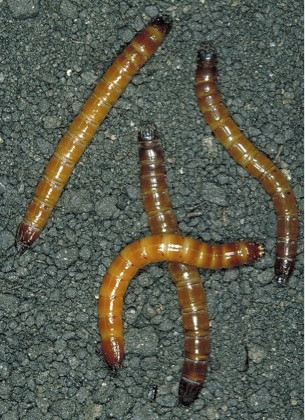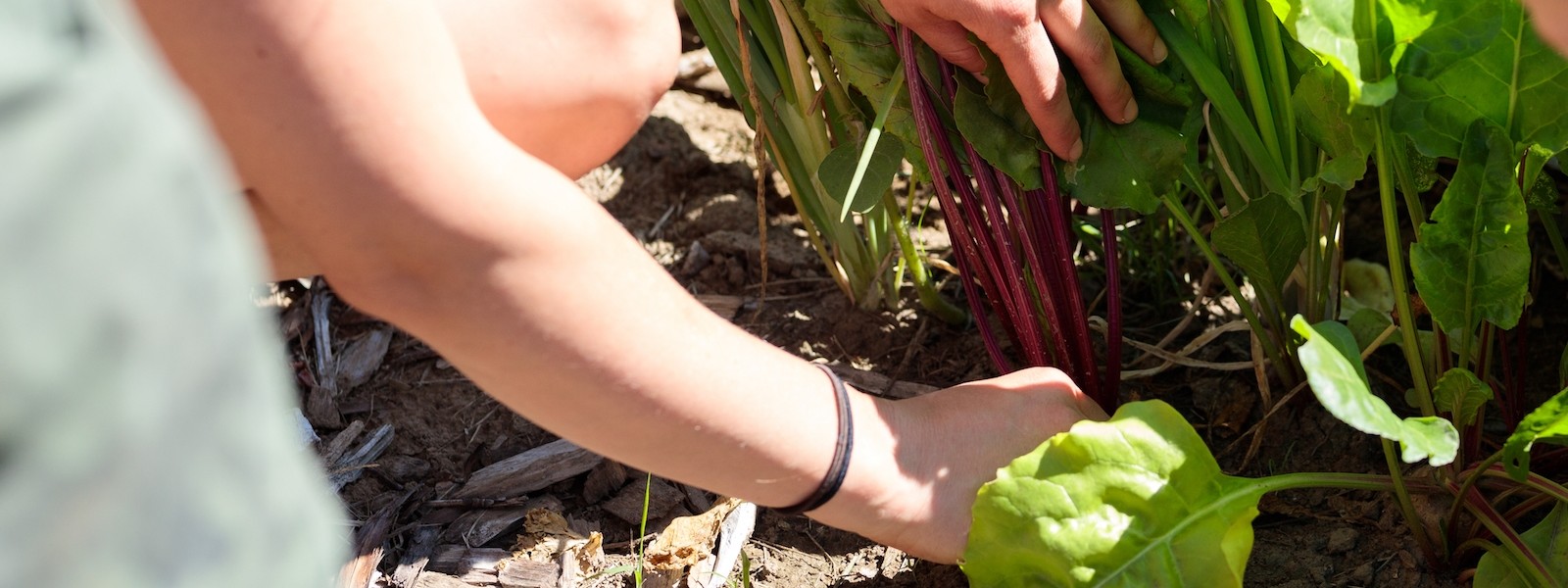Pest: Wireworm
Ever find potatoes with wriggly holes inside? This is probably wireworm damage.
Adults are a hard-shelled, elongated, dark-colored, 1/3-3/4” beetle with lengthwise grooves on wing covers. They are often called “click beetles” because they make a clicking noise. The larvae are a yellow to reddish brown, jointed, wirelike 1-1 1/2” worm.

Life Cycle
Adults lay eggs on roots in early spring. The larvae hatch in 3-10 days and spend 2-6 years feeding on surface roots in the spring and fall. They more deeper into the soil to overwinter. Mature larvae pupate in the late summer and overwinter as adults. One generation in 2-6 years.
Plants They Attack
Wireworms are most common in soil recently in sod. They can attack gladiolas and other flowers, corn, small grains and most vegetable crops. They can cause significant damage to potatoes, beets and carrots.
Spot the Damage
Larvae bore into newly planted seeds or into plant roots, tubers, and bulbs, preventing germination or stunting and killing plants. Adult beetles feed on leaves and flowers, but cause little damage.
Preventative Actions
- Wait to plant potatoes until the soil is warm, keeping the soil bare until planting.
- Release chickens into worm-infested beds to eat the larvae.
- Use pieces of raw potato as wireworm traps. Stick a wooden skewer through each piece of potato and bury the pieces 4 inches deep in infested beds. Check the traps every day or so and destroy the wireworms inside.
- Keep your garden well-weeded.
- Cultivate every week for 4-6 weeks in fall to expose and destroy the larvae
Live Biological Controls
Release parasitic nematodes to the soil to feed on the larvae. This is a particularly effective method since the larvae live for so long in the soil.
Sources
CCF staff
Good Bug, Bad Bug by Walliser 2008
The Organic Gardener’s Handbook by Ellis and Bradley 1996

